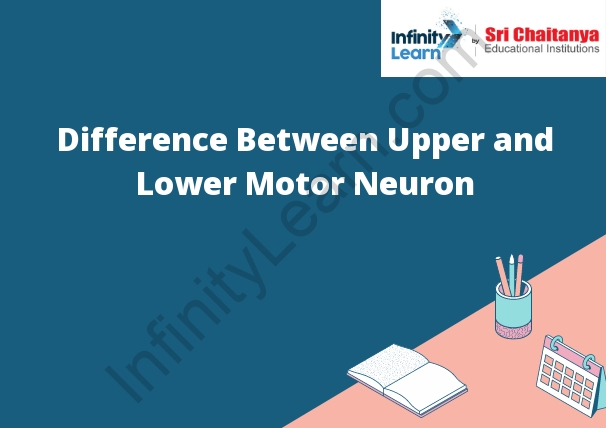Table of Contents
The Central Nervous System
(CNS) is the system of the body that consists of the brain and spinal cord. It controls all the activities of the body. The CNS receives information from the body’s senses and sends instructions to the body’s muscles and organs.
The brain is the center of the CNS. It controls all the activities of the body. The brain receives information from the body’s senses and sends instructions to the body’s muscles and organs.
The spinal cord is a long, thin nerve that runs from the brain to the base of the spine. The spinal cord carries messages between the brain and the rest of the body.

What is Upper Motor Neuron?
Upper motor neuron (UMN) is a nerve cell found in the brain and spinal cord. It is responsible for sending messages from the brain to the spinal cord and other parts of the body. These messages control movement and coordination. UMN damage can lead to problems with movement and coordination.
What is Lower Motor Neuron?
Lower motor neuron (LMN) lesions are a common cause of paralysis. They can be caused by a number of diseases, including ALS, multiple sclerosis, and poliomyelitis. LMN lesions damage the nerve cells that control the skeletal muscles. This damage results in muscle weakness and paralysis.
Upper Motor Neuron
Upper motor neuron syndrome is a condition that affects the upper motor neurons in the brain. These are the neurons that control movement. Upper motor neuron syndrome can cause problems with movement, balance, and coordination.
Lower Motor Neuron
Lower Motor Neuron Disease (LMND) is a general term for a group of neurological disorders that cause muscle weakness and atrophy. LMND can be caused by a variety of different diseases and conditions, including ALS (Lou Gehrig’s Disease), spinal muscular atrophy (SMA), and Guillain-Barre syndrome.
Symptoms of LMND can vary depending on the underlying cause, but typically include progressive muscle weakness, atrophy, and fasciculations (abnormal contractions of individual muscle fibers). Patients may also experience difficulty walking, talking, and swallowing. In some cases, LMND can lead to paralysis and death.
There is no cure for LMND, and treatment focuses on managing symptoms and preventing further damage to the nervous system. Physical therapy, occupational therapy, and speech therapy may be used to help patients maintain muscle strength and function. Some patients may require assistive devices or wheelchair assistance to remain mobile.
Upper and Lower Motor Neurons have Similarities too
There are some similarities between upper and lower motor neurons. Upper and lower motor neurons both have long axons that carry messages from the brain to the muscles. Upper and lower motor neurons both have dendrites that receive messages from the muscles. Upper and lower motor neurons both release neurotransmitters that stimulate the muscles.
Definition
A medical device is a product that is used to diagnose, treat, or prevent a disease or other medical condition. Medical devices vary in complexity and can include simple items such as tongue depressors and bandages to more complex devices such as pacemakers and MRI machines.
Significance
This study showed that there is a significant relationship between the use of social media and the level of narcissism. The study also showed that there is a significant relationship between narcissism and the use of social media.
Transmission
electron microscope image of a single graphene nanoribbon
A graphene nanoribbon (GNR) is a ribbon-shaped structure of graphene, a two-dimensional carbon allotrope. Graphene nanoribbons can have a width of a few nanometers and a length of up to a few hundred micrometers.
Graphene nanoribbons can be produced by cutting a sheet of graphene with a sharp blade. They can also be produced by chemical vapor deposition (CVD), in which graphene is deposited on a substrate in the presence of a catalytic metal.
Graphene nanoribbons have a number of interesting properties. They are semiconducting, with a bandgap that can be tuned by changing their width. They are also strong and flexible, and can be used in nanoelectronics and nanotechnology.
Graphene nanoribbons were first synthesized in 2004. The first use of graphene nanoribbons in electronic devices was demonstrated in 2011.
Bodies of Cells
Cellular biologists use a variety of techniques to visualize the structure and organization of cells. One common technique is to stain cells with dyes that bind to specific structures or components within the cell. This allows the cellular biologist to see the distribution of these structures or components within the cell.
Another common technique used to visualize cells is to fluorescently label specific proteins within the cell. This allows the cellular biologist to see the location and distribution of these proteins within the cell.
Based on the Classification
Scheme for Mental Disorders, this condition is
- Axis I: Clinical Disorders and Other Conditions that May Be a Focus of Clinical Attention
- Axis II: Personality Disorders and Mental Retardation
- Axis III: General Medical Conditions
- Axis IV: Psychosocial and Environmental Problems
- Axis V: Global Assessment of Functioning
Classification
- Domain: Eukarya
- Kingdom: Animalia
- Phylum: Chordata
- Class: Mammalia
- Order: Primates
- Family: Hominidae
- Genus: Homo
- Species: sapiens
- Homo sapiens is a species in the genus Homo, which is in the family Hominidae.
Damage Signs and Symptoms
The most common symptoms of a concussion are headache, dizziness, nausea, vomiting, and confusion. Other symptoms may include:
- Amnesia or forgetfulness
- Sensitivity to light or noise
- Feeling sluggish, groggy, or foggy
- Problems with balance or coordination
- Numbness or tingling
- Changes in mood or behavior
- If you or someone you know experiences any of these symptoms after a possible head injury, seek medical attention right away.









